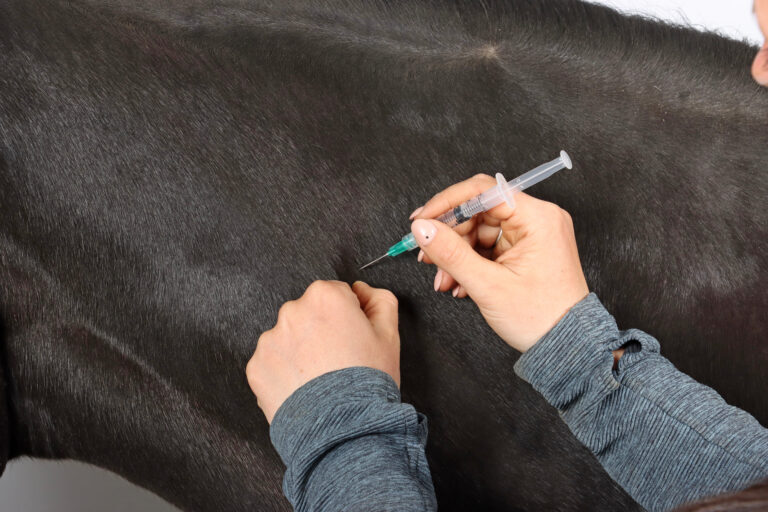
Bisphosphonates are drugs that inhibit bone breakdown and resorption, and a common treatment for bone disorders such as podotrochlosis (navicular). They are FDA-approved for use in horses 4 and older.
Vets should not administer bisphosphonates less than 28 days prior to recognized competitions. When selecting cases, consider the horse’s age, reason for treatment, and additional non-steroidal anti-inflammatory (NSAID) use, said Lindsey Boone, DVM, PhD, Dipl. ACVS-LA, associate professor of equine surgery and sports medicine at Auburn University’s College of Veterinary Medicine, in Alabama. She spoke on the subject in a Sunrise Session at the 2024 American Association of Equine Practitioners Convention, held Dec. 7-11, in Orlando, Florida.
How Safe Are Bisphosphonates?
To test safety in horses, scientists evaluated the drugs at one, two, and three times the label dose and saw no bone density changes, meaning they’re very safe at the label dose, said Greg Schmid, DVM, equine professional services vet at Dechra. In young horses at one, two, and four doses, they saw no growth parameter changes but a mild metabolic parameter increase after two doses. “They also did not observe any negative effects on the horses’ skeletal health,” he added.
In horses presenting with acute kidney injury after bisphosphonate treatment, scientists found 75% were also given NSAIDs and had a poor appetite, abnormal urination, weight loss, and colic, said Boone. “Most responded positively to IV fluids and made a full recovery,” she said. She advised stopping NSAIDs prior to treatment to reduce renal injury risk.
Because bisphosphonates can lead to brittle bones in humans, researchers examined their long-term effects (up to one year) on equine bone remodeling. They found long-term repeat administration had a limited effect on remodeling over 12 months. Patient selection and pathology (disease or damage) are important considerations when choosing to treat with a bisphosphonate, said Boone.
Bisphosphonate Case Studies
A 5-year-old show jumper became acutely lame with no obvious abnormalities, but nerve blocks pointed to the fetlock. After a CT scan revealed joint injury, vets performed surgery, then bisphosphonate, interleukin-1 receptor antagonist protein, and intra-articular (IA) bone-marrow-derived stem cell injections, said Sarah le Jeune, DVM, CVA, Cert. Vet Chiro, Dipl. ACVS, ACVSMR, professor of surgical and radiological sciences at the University of California, Davis. “At his two-year postop checkup he had returned to some level of jumping, but a lower level than … capable of prior to the injury.”
A 9-year-old dressage horse presented acutely 4/5 lame with only mild improvement after a palmar digital nerve block but significantly improved after an abaxial sesamoid nerve block. Hoof and fetlock X rays showed no abnormalities. Vets treated him conservatively with “multiple bisphosphonate injections, IA platelet-rich plasma, shock wave, and rest, but he showed no improvement after one year,” said le Jeune.
A 5-year-old event horse was intermittently lame and painful on suspensory branch palpation. The ultrasound was unremarkable, but le Jeune treated with bisphosphonate injections, shock wave, and rest. He made a full recovery and returned to the same level of work.
Take-Home Message
Bisphosphonates are safe, but vets should not administer NSAIDs in conjunction with them and should check renal function via bloodwork during treatment. Also, if used off label (for anything besides navicular), bisphosphonates might be an effective part of a multimodal treatment approach for some musculoskeletal pathologies.
Stay in the know! Sign up for EquiManagement’s FREE weekly newsletters to get the latest equine research, disease alerts, and vet practice updates delivered straight to your inbox.


![[Aggregator] Downloaded image for imported item #18383](https://s3.amazonaws.com/wp-s3-equimanagement.com/wp-content/uploads/2025/09/30141253/EDCC-Unbranded-29-scaled-1-768x512.jpeg)

